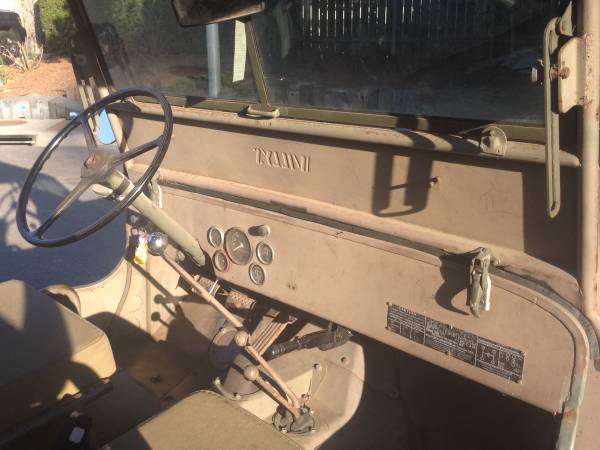UPDATE: Price dropped to $5700.
Drain holes have been filled. Not a completely stock engine since it has a newer alternator and looks to be 12 volte.
“1948 willys jeep. Completely stock 4 cylinder L-head. 3 speed T-90 transmission, T-18 transfer case with new cross shaft. 11 inch drum brakes. Dual master cylinder. Saginaw steering box. New NDT tires. No rust. Straight body. Military canvas top. 12 volt system. Manual front hubs”





It’s a replacement tub. Among other things, no key hole for keyed coil
What does “Drain holes have been filled” mean? I have seen it in multiple posts but I haven’t been able to put it together.
If you look on an original flatfender tub, you will see small oblong holes on either side of the body, on the side panel just above the foot holes. Those holes were designed to drain the tub in the event water gets on the floorboards.
Thanks Vincent. To go a little further,
WWII tubs (GPW & MB) did not have drain holes near the step. Nor did M-38s. They all drained from the floor. The CJs (CJ-2A/3A/3B/DJ-3A) all had drain holes near the step. It’s also any area prone to rust. So, when people repaired their tubs in that area, they often covered that hole. Therefore, when the hole is filled on a CJ, it most often means that body work has been done along the body.
Now, sometimes people will put a small flap over the hole that isn’t always obvious in the photo, so you have to look for that as well.
If you ever have questions, feel free to comment or email me directly at d@ewillys.com.